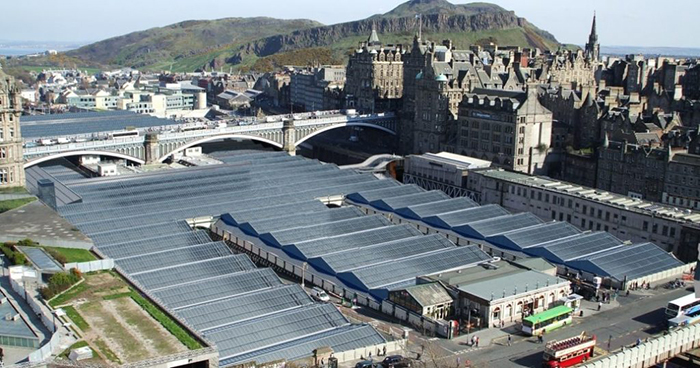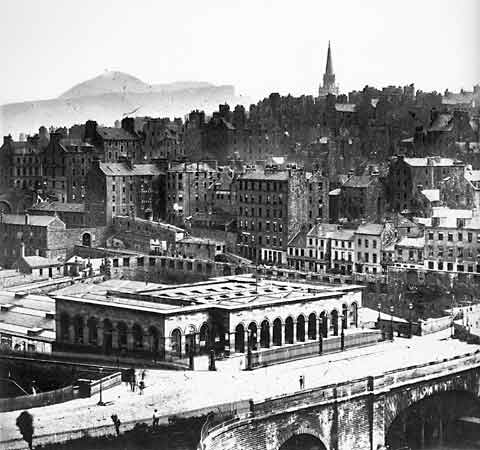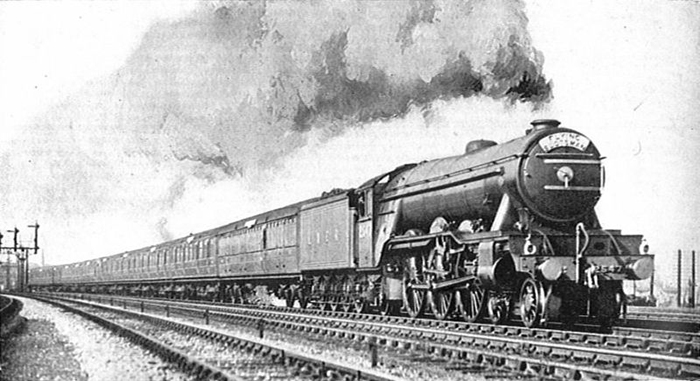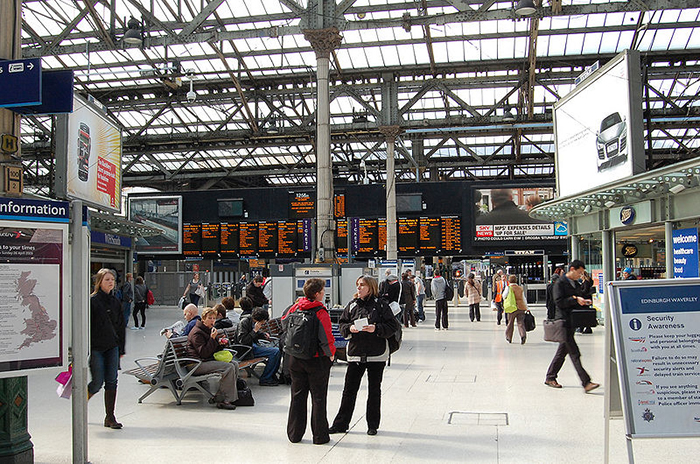

 STUART JORDAN recounts the history of this large station in Scotland.
STUART JORDAN recounts the history of this large station in Scotland.
The railways came to Edinburgh in 1842. Proposals were made in the 1830s for a railway between Glasgow and Edinburgh, but they were met with resistance from business owners in the centre of Edinburgh. The ‘Princes Street Proprietors’ had spent large amounts of money developing the area – draining the fetid Nor Loch and transforming the area around their businesses into gardens – and they didn’t want the area filled with noisy and dirty locomotives.

Waverley Station today.
With this challenge to the Act of Parliament, the terminus was stopped short of Princes Street and was built at Haymarket. On 21st February 1842, the Edinburgh and Glasgow Railway opened for passenger traffic between Glasgow Dundas Street and Haymarket. Demand for the passenger service outstripped capacity and the E&GR had to buy more locomotives and stock. However, freight revenue had overtaken passenger revenue by 1850.
This was due, in part, to a change of heart from the business owners along Princes Street. Throughout the 1840s a phenomenon known as ‘Railway Mania’ gripped the country. With two other companies vying with the E&GR for a central Edinburgh location for a station, a proposal was put forward to access the gardens, but with the trains hidden by walls and embankments. In 1846, the North British Railway opened North Bridge station on the coveted site and the following year the E&GR and the Edinburgh, Leith and Newhaven Railway also opened stations, adjacent to North Bridge.

Waverley Station, with the booking office in the foreground, and Edinburgh Old Town.
When the ‘Waverley’ route opened to Carlisle (named after Sir Walter Scott’s Waverley Novels), the name became a collective term for all three stations. In 1868 the North British Railway bought out the other stations, demolished them, and built a new station in their place. This new station had a glass overall roof and was low so it wouldn’t block any sightlines, for example the view of Arthur’s Seat from Princes Street. At the time of opening, it was the largest station in the UK. In 1888, the station became the finish line of the so-called ‘Race to the North’ from London King’s Cross and London Euston.

A3 2547 'Doncaster', hauling the Flying Scotsman Train.
The ‘Flying Scotsman’ service, running up the East Coast Main Line from London to Edinburgh, was started in 1862 but was not officially called by this name until 1924. After the creation of the Big Four railway companies, LNER capitalised on this route – using their famous A3 and A4 Gresley Pacific locomotives. Other iconic locomotives would haul this train; the Class 55 Deltic, the Intercity 125 and 225, and currently the Class 800 and 801 Azuma trains run by the ‘new’ LNER.

An image of the station in more recent times, showing the amount of light on the concourse due to the glass roof.
In the 2000s and 2010s the station was extensively refurbished, with platforms added and the glazing on the roof replaced. New lifts and escalators have greatly helped circulation of passengers. National Rail are now proposing a Waverley ‘Masterplan’ to continue the evolution of the station as passenger numbers continue to rise.
Current services include: